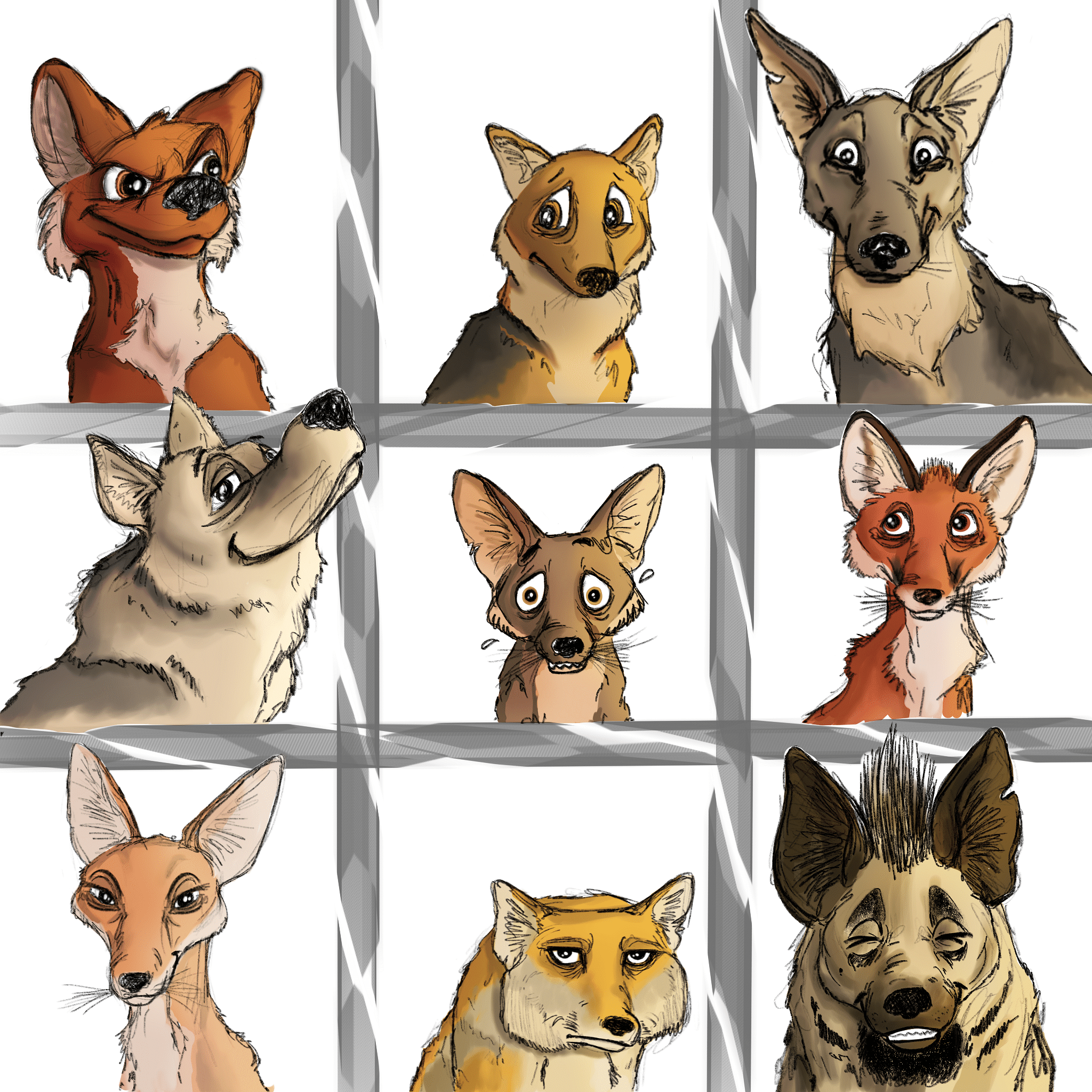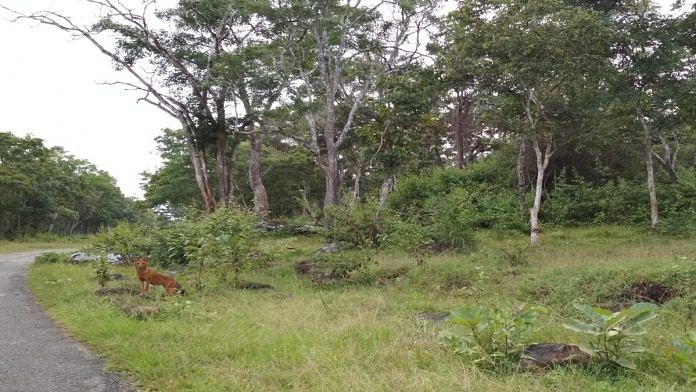Bengaluru: For too long, wildlife conservation in India has been focussed on large carnivores like tigers and snow leopards while ignoring smaller ones like wild dogs, foxes, wolves and hyenas. Disproportionate attention has also been given to forests, considering that many of our national parks and wildlife sanctuaries — collectively called protected areas (PAs) that occupy about 4-5 per cent of the country’s land area — are forested landscapes.
A group of wildlife researchers is now trying to change this with a call to create Canid Conservation Units (CCUs) aimed at the conservation of wild canids like dholes, jackals, foxes, and wolves, besides hyenas (hyenas don’t belong to the canid family), in a larger effort to conserve less-appreciated landscapes like grasslands and scrublands.
The group comprises researchers from the conservation agencies Wildlife Conservation Society-India (WCS-India), Ashoka Trust for Research in Ecology and the Environment, and Wildlife Conservation Trust, research institute National Centre for Biological Sciences, the University of Florida, US, and James Cook University, Australia.
After studying the country’s wildlife habitats, specifically those outside protected areas, and non-forested landscapes, the researchers have concluded that wild canids and hyenas could potentially act as flagship species for conserving grasslands, scrublands, open-barren lands, ravines, trans-Himalayan plains, etc.
The study was published on 10 March in IOP Science, a journal.
These landscapes are “severely under-represented”, said Arjun Srivathsa, a PhD candidate at the University of Florida and a research associate with WCS-India who is a member of the ‘Wild Canids–India Project’ team that conducted the study.
Many of the country’s grasslands and scrublands of deep ecological importance are “tagged as wastelands”, Srivathsa added.
Because of the classification, he said, such lands are “diverted easily for mega-infrastructure projects” which “heavily compromises” and even completely eliminates wild canid and hyena habitats.
Most of these habitats are also multi-use areas with a lot of human habitation and, therefore, Srivathsa said, “conserving such landscapes requires a different approach that allows for equitable land-sharing between people and carnivores”.
The study focussed on nine species and sub-species of carnivores — dhole, golden jackal, Indian wolf, Tibetan wolf, Indian fox, red fox, desert fox, Tibetan fox and striped hyena — across the Indian landscape.
It involved an assessment of the threat levels for these species, and the researchers put forth their conclusions via a scorecard where a score between 75 and 100 (ranked ‘A’) signifies a species/sub-species is faring well, while that between 0 and 39 (ranked ‘F’) signifies severe threats and a call for immediate conservation attention.
While the golden jackal, the Indian wolf, the Tibetan wolf and the red fox were ranked ‘B’, the dhole and the desert fox were classified as ‘C’. The Indian fox and the striped hyena were ranked ‘D’.

Overall, the aim of the study was to create CCUs. The researchers have identified 14.76 lakh sq kms of land, 26 per cent of which lies within protected areas. They have recommended that if conservation interventions are implemented within these CCUs — wherever logistically and socially feasible — it would result in maximum benefits to wild canids, hyenas and their habitats.
“CCUs are areas that we have demarcated across the country, based on the extent of under-represented habitats and the distribution of wild canids/hyenas, while also accounting for human population and poverty levels,” Srivathsa said.
Also Read: India’s tiger reserves have no space, adding more of them will lead to human-tiger conflict
Setting up conservation units for smaller carnivores
The researchers used literature and citizen-science surveys besides government and non-government open-source databases to map the distribution patterns of these carnivores. The idea was to identify locations where investments in wildlife conservation would lead to the highest benefits.
The study notes that CCUs could be set up via models like Village Reserves (i.e. village forests or panchayat forests), community reserves and conservation reserves, with common grazing lands etc.
“Our take is to expand such areas so that they are preserved for human-carnivore land-sharing, safeguarding them against massive infrastructure projects,” Srivathsa added.
In the study, the authors note that “Madhya Pradesh, Karnataka, Odisha and Chhattisgarh have the highest conservation potential and likelihood of success” with respect to conserving such species in view of their budgetary allocation for forests and wildlife that “is indicative of their propensity to prioritise conservation.”
Rajasthan, Gujarat, Andhra Pradesh, Maharashtra, West Bengal, Bihar, Tamil Nadu and Uttar Pradesh, too, have a high potential, they add, but the states would need to invest “higher budgetary resources” towards forests and wildlife than they do at present.
The need to update global conservation maps for canids
The study also calls for a need to revise India-specific international data with respect to canid habitats.
“IUCN [International Union for Conservation of Nature] maps are widely used for making a lot of global, national and regional conservation decisions,” Srivathsa said.
The IUCN is an international organisation that works towards nature conservation via research-gathering and data analysis etc.
“But the IUCN range maps are only as good as the information that is made available to the assessors,” Srivathsa added. Since wild canids and hyenas are not well-studied in India, he said, “the current maps are very inaccurate”.
The study claims wide mismatches for the species/sub-species in question. “We will now work with the IUCN Canid Specialist Group and share these new maps so that the extent and locations of their distributions are updated,” Srivathsa said.
The writer is a Bengaluru-based freelance journalist
Also Read: How a tiger is poached in India in 2019: Breaking down the supply chain



